The London system has long been considered a “second-hand debut” for White, with the reputation of being boring, uninteresting, and suitable only for “lazy” players who do not want to study the basic openings in depth.
In this article, we delve into the intricacies of The London System, exploring its history, key concepts, variations, and enduring impact on modern chess strategy.
Read also: The Englund Gambit Opening: Basics, Middlegame, and Traps
What is The London System?
The London system is a good and solid opening for all level players. White quickly develops his pieces and fights for the center. It is not easy to meet if you play black – you must act purposefully and accurately.
After all, White sets the pace, and the game can lead to a long strategic battle.
However, there are other options for whites. The system has its peculiarities, plus White can choose different formations to try to achieve a victory.
Another distinct advantage of the London System, and probably why so many chess players choose to incorporate it into their repertoire, is that the amount of theory you need to know is minimal.
This opening can be played with ideas in most cases, and the order of moves is almost irrelevant. Players can focus on learning chess and improving their overall understanding rather than learning a lot of theory.
How to set up the London System?
To set up The London System Opening, you need to follow these steps:
1. Pawn to d4:
Start by moving your d-pawn two squares forward to d4. This move establishes control over the center and prepares for the development of your pieces.
2. Knight to f3 (Nf3):
Next, move your knight’s to f3 (Nf3). This move supports your central pawn on d4 and prepares to develop your knights and bishops.
3. Bishop to f4:
Develop your c1 Bishop by moving it to f4. Placing the bishop on this square supports your central pawn on d4 and prepares for castling kingside.
4. e3 and Nbd2:
Depending on the position and your preferred setup, you can play pawn to e3 to reinforce your center and then develop your knight to d2.
This setup allows for flexible piece development and prepares to bring your other pieces into play.
5. Castle Kingside:
Finally, complete your setup by castling Kingside. This move improves the safety of your king and connects your rooks, preparing for the midgame.
This setup forms the core of The London System, providing a solid foundation for further strategic maneuvers and tactical play.
The London System variations
The London System Opening has several variations that players can choose based on their style, preferences, and specific positions on the board.
Here, I give you some common variations of The London System:
Classical London System:
This variation follows the core setup of The London System (Which I talked about previously) with pawn to d4, Nf3, Bf4, e3, Nbd2, and kingside castling.
It focuses on solid pawn structure, flexible piece development, and center control.
Symmetrical Variation:
In the symmetrical variation, black mirrors white’s moves, creating a symmetrical pawn structure.
This variation can lead to balanced positions with both sides adopting similar setups and strategies.
The Jobava London System
The Jobava London System is an aggressive variation of The London System Opening, named after the Georgian Grandmaster Baadur Jobava.
It incorporates unique ideas and aims to surprise opponents with unconventional play, starting with d4, Nf3, and Bf4.
Theory of C5 without A6
Theory of C5 with A6
Theory of e6 and Bd6
Theory of e6 and Be7
Theory of e6 and Bb4
Theory of Bishop to f5
Advantages and weaknesses of The London System
There are many advantages and disadvantages to The London System opening, including:
Advantages:
- Solid Pawn Structure
- Flexible Piece Development
- Easy to Learn
- Reduced Opening Theory
- Universal Applicability
Weaknesses:
- Limited Early Central Control
- Predictability
- Potential for Passive Play
- Less Aggressive than Some Openings
Read also: The Scandinavian Defense: Basics, Middlegame, and Traps
The London System Traps
There are many traps in The London System opening that beginners and even professionals fall into, Which we will present to you today:
Trap 1 – Fast chekmate
Trap 2 – Nice gift
Trap 3 – Bb5 trick
Trap 4 – Jobava trick
Trap 5 – Win with Rook
Trap 6 – The Queen
Trap 7 – Rook trick
Famous games played using The London System
Now we will introduce you to famous players who used the opening in their international games, such as Carlsen and Kasparov:
Alexander Grischuk (2606) vs. Ruslan Ponomariov (2630)
Grischuk surprised Ponomariov with the London System in round 5 of the championship, resulting in dynamic play throughout the match.
Gata Kamsky (2610) vs. Viswanathan Anand (2751)
In the 1994, Kamsky used The London System against Anand, emphasizing solid pawn structures and flexible piece development.
How to beat the london system opening?
There are several tricks and traps that enable you to crush the London System opening, including:
Pawn to c5
You can beat the london system by playing pawn to c5, then queen to b6:
or you can play Bb4 if he play Qc3 and pin the white queen:
Qb6 and Qb3
You can get the Rook for free if your opponent does not notice the fork
if he notice, you can play Na2, then chek the king and get a free Rook:
Best books to learn The The London System opening:
Here are five recommended books to learn The London System Opening:
1. The Agile London System – by Alfonso Romero Holmes
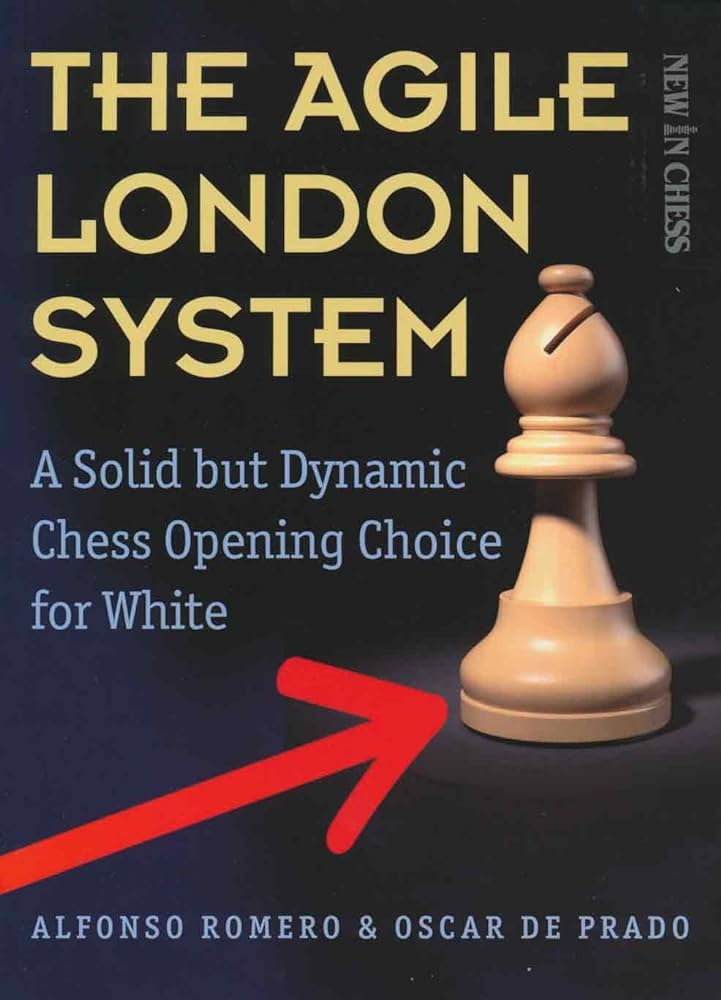
2. The Modernized London System – by Cyrus Lakdawala
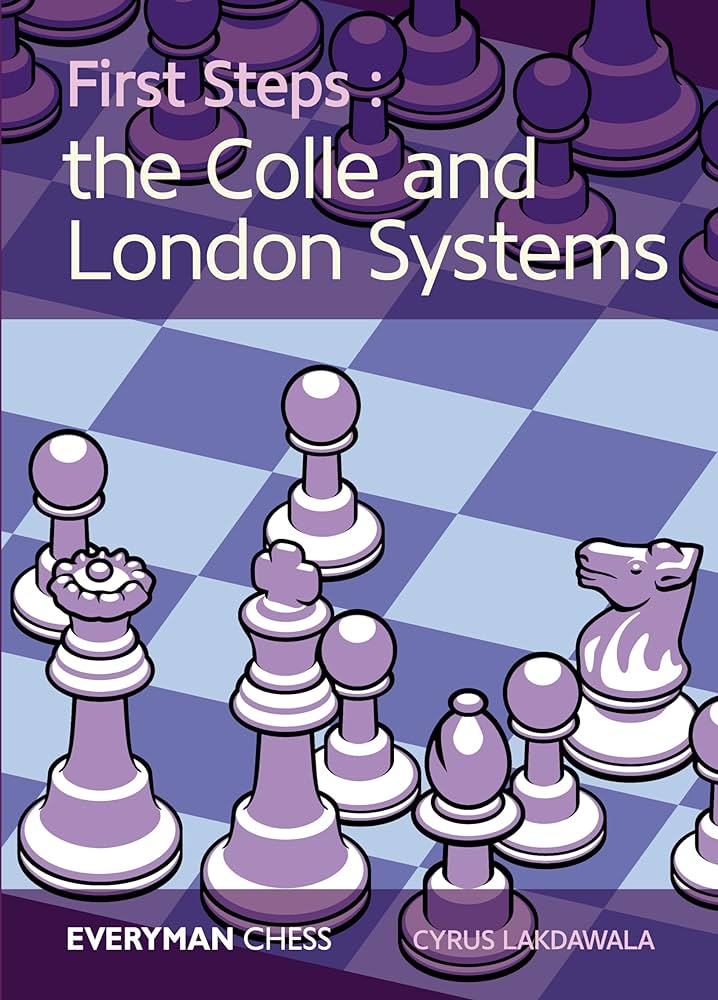
3. How to Play The London System: A Practical Guide for White – by Sverre Johnsen and Leif Johannessen

4. London System: A Complete White Repertoire – by Mikhail Krasenkow
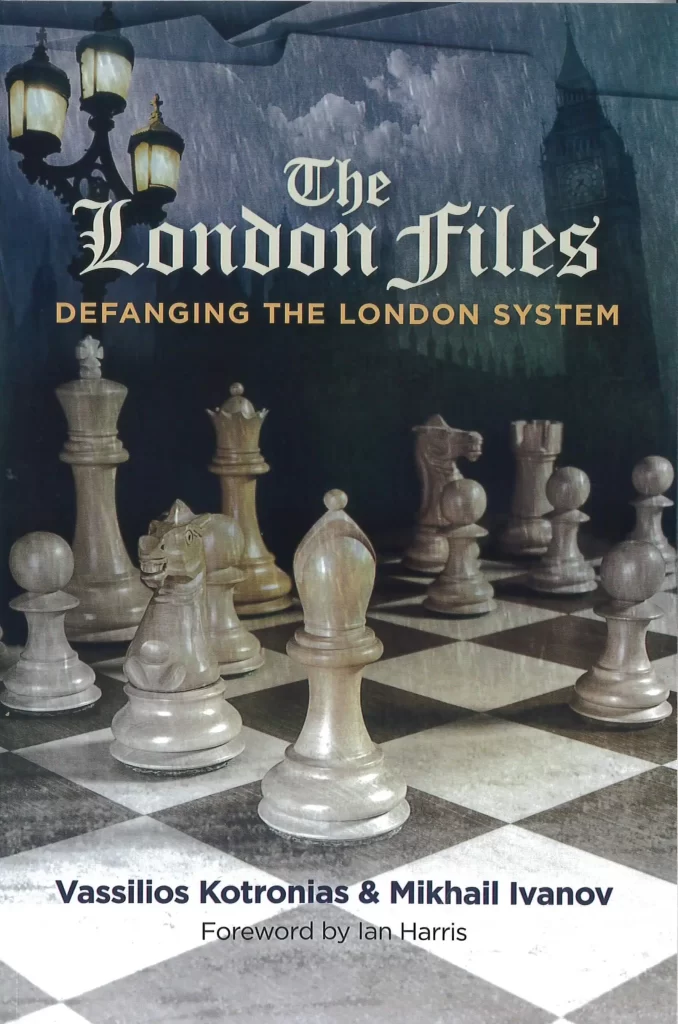
5. Winning with the Modern London System – by Nikola Sedlak
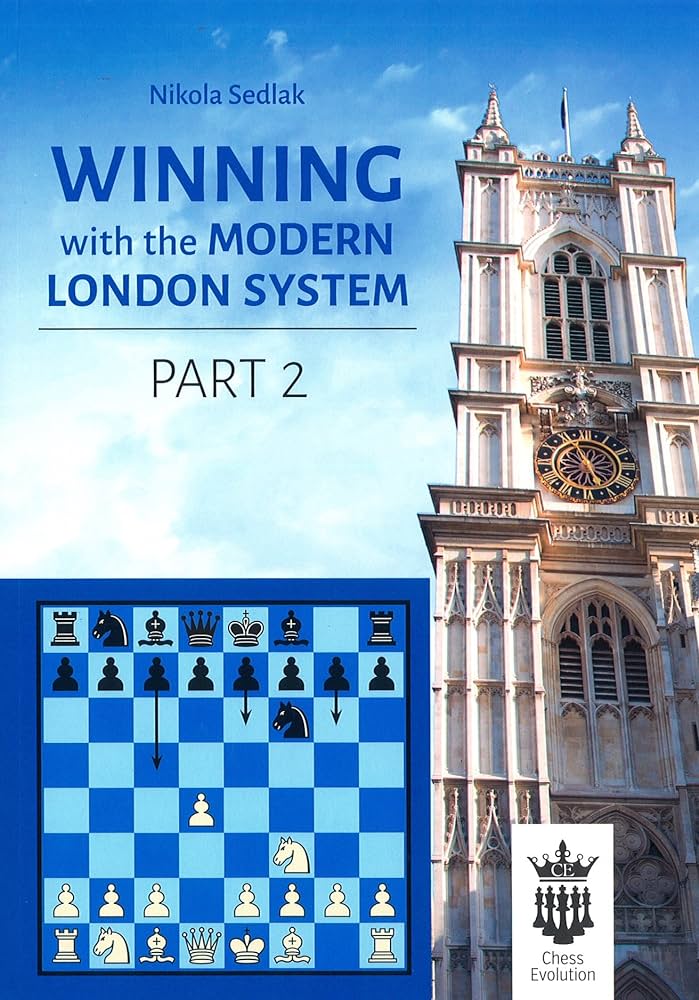
Read also: The Danish Gambit Opening: Basics, Middlegame, and Traps
Frequently asking questions (FAQ)
Her is some frequently asking questions about this opening:
No, the London System is an opening for White. Black responds differently, often with setups like d5 or Nf6.
Yes, the London System is a good opening, offering a solid and versatile repertoire option for players of all levels.


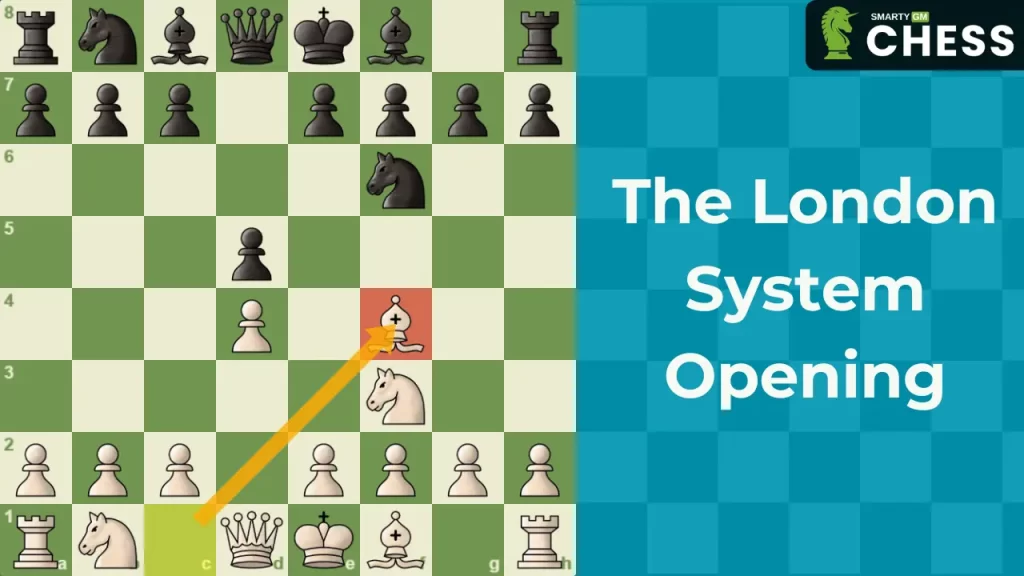
2 Comments
Pingback: The Englund Gambit Opening: Basics, Middlegame, and Traps - Smarty Chess
Pingback: The Scandinavian Defense: Basics, Middlegame, and Traps - Smarty Chess